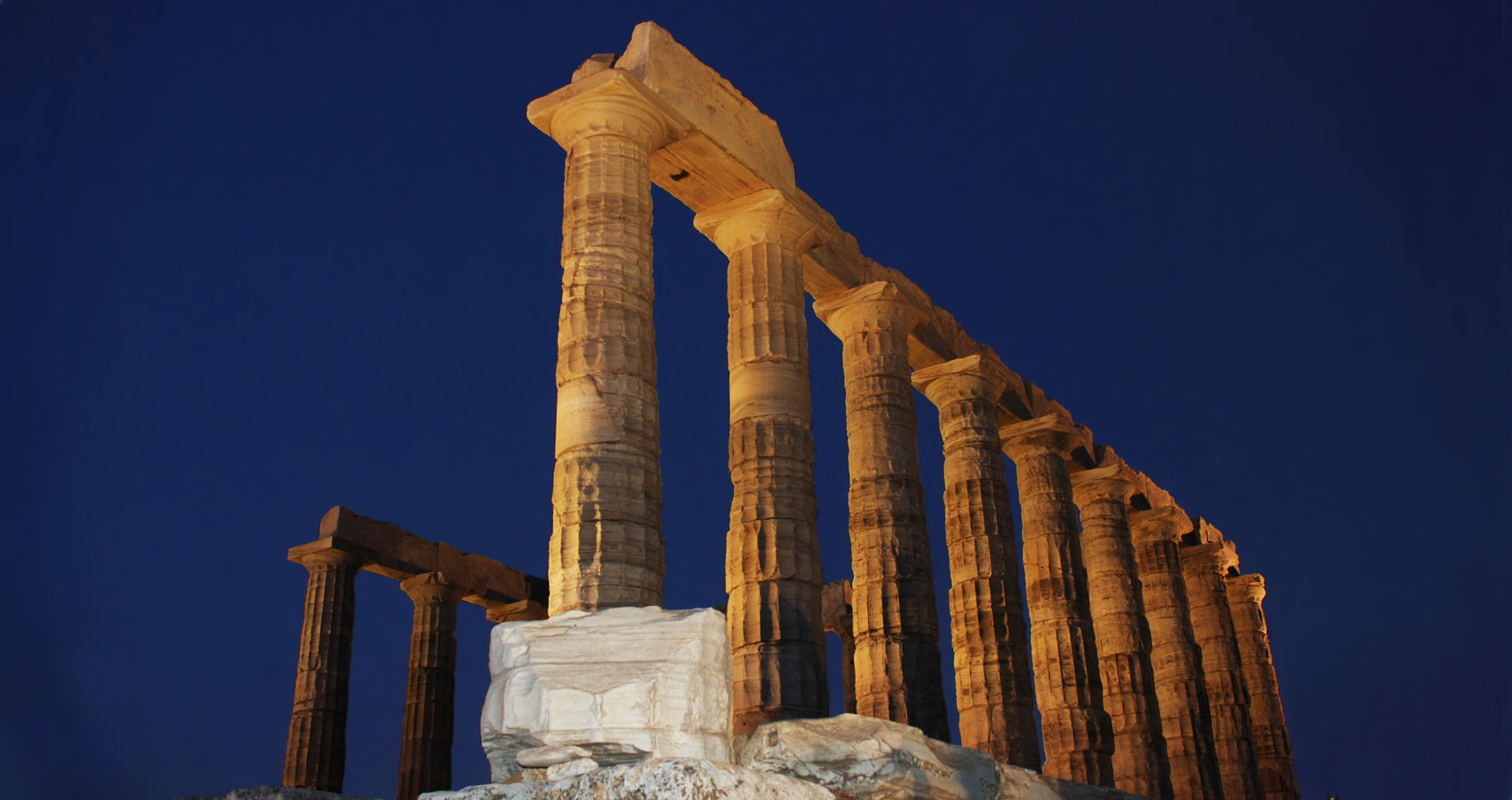MYTH OF ANCIENT GREECE
written by: Stanley Wilkin
@catalhuyuk
Within schools, colleges, and the older universities there continues inexhaustible interest in and glamorisation of Athenian democracy. It is the first true democracy (not true), the originator of modern thinking and modern life (absurd), the home of philosophy (what of ancient Mesopotamia and the speculations of Hebrews, Egyptians and Canaanites). The Book of Job touches on many of the issues dealt with in Greek philosophy. Many ancient kingships may not have been quite as powerful as they now appear, but exhibit dynastic propaganda, such as colossal pyramids and palaces.
It is still a risk to raise the above points, leaving a writer open to disapproval, even ridicule. Ancient Greece, in particular ancient Athens, is supposed to be the spiritual and intellectual home of European civilisation. Our fixation with Greece, for example, prevents consideration of other cultures that engaged in similar political experiments in the Near East, Africa and other parts of Europe. We have selected Greece as iconic, symbolising European superiority. In fact, Greece’s advantage was to be geographically close to the Near East from where it obtained stimulation and instruction. Although Greece influenced many aspects of present European culture, influences came equally from the Near East and Central Europe. Greece had one singular advantage in that early in its history it recorded its activities and self-consciously reflected on its written record.
In this essay I will put forward the idea that Athenian democracy was in fact an elitist exploitative state that used democracy to create stasis, allowing all the male population to engage in the process of government in order that the wealthiest could exploit other states and groups. Poorer citizens benefited from such exploitation. In effect, it was not the paradigm of endless Classical Civilisation courses. This assignment will also consider that Bronze Age traditions continued within Greece as a whole into the classical period and also consider the consequences for classical Greek culture.
Mycenaean Greece:
It has long been held that Greek speaking hordes arrived in the peninsula c 2000 BCE but there is little convincing evidence for such an event. If Indo-European languages arrived with Anatolian farmers, posited by Colin Renfrew, then they were there all along. The similarity of languages between central Anatolia and Greece suggests this, but alternatively it might confirm the more traditional viewpoint that nomadic groups from central Asia began moving into the area 6000 years ago. Mycenaean militaristic behaviour was very different from the more sedentary farmers and traders before that date. Aegina, south of Attika, c2300, had experienced a period of urbanisation, based upon grape and olive agriculture, encouraged by the emergence of Minoan trade but it’s emergence does not appear to account for later more warlike developments.
Although there is little information regarding Bronze Age Greece, the evidence we have from Mycenae and other ancient sites indicates an organised society ruled by a powerful elite supported by military forces. It resembles Near Eastern societies of the middle Bronze Age and may have imitated those societies. Some authorities suggest that Mycenaean Greece suffered the same fate as Near Eastern societies of the time, weakened by internal revolt before outside migratory forces overwhelmed them. A number of Mycenaean Gods and goddesses continued into the Classical period, although Zeus may have been brought in from outside. There appears to have been no separate organised priesthood.
Minoan culture influenced Mycenaean civilisation, evident from the wall paintings discovered at Pylos in eastern Greece that were replicas of Minoan murals, the people represented wearing Minoan clothes and hairstyles. But Minoa did not, it appears, influence the political and military systems of Greece. Influences also probably came from Anatolia and the Near East. At some point, perhaps around 1400 BCE, Greece was orientalised assuming the urban traits of Near Eastern cultures.
It is assumed, by their focus upon warfare, that Mycenaean culture was a conquest culture, but apart from the evidence of the Mycenaean takeover of Minoan Crete and its settlements in Anatolia there is little true evidence of warlike activity. Most martial display was probably for internal competition and display. Evidence of chariot battles may merely indicate internal elite competition. Murals found at Santorini show a sea battle and armies advancing through cities, but this behaviour may have been restricted to Greece and the nearby islands. Armies were probably very small compared to those put in the field by Near Eastern cultures. Greece then, and later, evidenced in the Iliad, was a raiding military society.
It is thought that the Ahhiyawa mentioned in Hittite records, the powerful militaristic Indo-European culture that flourished in central Anatolia, might be Mycenaean indicating an exploratory force taking advantage of local instability or Miletus, a Mycenaean colony, expanding its territory. It is likely that Mycenaean forces would have floundered when faced with the larger, more technically advanced armies of the Near East. It is significant that the Mycenaean’s are not otherwise mentioned by the great states of the Near East.
Mycenaean towns and cities were often formed of palaces-fortresses that loomed over fertile plains, suggesting a dominant elite controlling the general population. This may be close to the truth. The lack of community identity may be what caused the Mycenaean cities, as with the Near Eastern cities of the time, to immediately collapse when subject to determined attacks from outside. The Mycenaean elite appears to have related more closely to each other, as appears the case in the Near East, causing top heavy wealth accumulation with little dribbling down to common people. The mass of the population could not identify with those who ruled them. By 1100 BCE Near Eastern civilisations had become bankrupt, their social and economic systems no longer working. The Sea Peoples, a disparate migrant group, may just have tipped the balance. Certainly, by 1100 BCE the social system prevailing in the west and north Mediterranean appears redundant and new groups with new identities came to the fore. Although legend specified a Dorian invasion as the cause of Mycenaean collapse, the evidence shows little clear sign of this as a genuine event. Nevertheless, if a Dorian invasion was instrumental in destroying Mycenaean culture, it probably came from northern Greece where many other Greek speakers had already settled. While writing disappeared, along with the civilisation that inspired it, the sites of the abandoned towns were re-inhabited and small villages were created. In Eastern Greece evidence of recovery can be seen as early as the 10th century BCE.
A different economy:
Knowledge of Mycenaean civilisation seems to have been forgotten by later Greek civilisation, although Thucydides references earlier states, mainly gleaned from the lliad, along with the then current belief in a Dorian invasion. Certainly, the Mycenaean were connected to an earlier, simpler economic environment where small elites enjoyed most of the wealth. Although the polis appears to have roots in 9th and 8th century Greece, military armour and tactics seem to have derived from the earlier period. Even before the development of the Greek phalanx, Greek troops may have been heavily armoured with tactics based on protective shields. There are a number of paintings of marching troops, behaving, it seems, differently from warriors in the IIiad who were mainly concerned with one on one contests. Classical Greece and Mycenaean Greece were both military societies which made a fetish of war.
By 800 BCE Phoenician cities were thriving in present day Syria and Lebanon. The old societies and economies based upon rigid control of wealth had given way to more flexible societies and economies. Although these cities had kings evidence suggests that they also had important assemblies that helped determine city policies.
The Hebrews did not have kings, until threatened by outside forces. Many early kings were merely war lords. On occasion, these warlords formed dynasties. Phoenician cities established colonies throughout the Mediterranean. They carried their alphabet with them, influencing the Greeks and Italian cultures. In the eight century Greece too was sending out colonies, seeding the Mediterranean with its city states. From 800 BCE there is evidence of Greek traders in Cyprus and the Levant. The cities began to form, providing some indications of their later prominence. Sites such as Thebes and Athens were probably never abandoned although most of the great Mycenaean cities disappeared for ever.
By this time, Greeks were trading again with the Near East and Attica appears to have coalesced into a single political entity. Legend had it that Attika had early rejected its kings and kingship, but again there is little clear evidence. The idea that kings ruled throughout ancient Greece is based on surviving legends and the executive form in Spartan society. It is not clear that the institution was prevalent, but just an assumption of archaeologists. There is a tendency to ignore the large number of early societies that had no kings, or only for limited periods in their history. Most of the early communities may have had no need for central authority. As asserted above, the Hebrews also experimented with other forms of government.
According to Hesiod (c 700 BCE), Greece was ruled by the nobility, which acted disrespectfully to commoners, like himself. Most of the land was in the hands of the rich, with common folk increasingly impoverished and indebted. Unelected leaders of the nobility seized power, ruling as tyrants. Greek legend has it that wise legislators appeared to deal with social unrest as the result of aristocratic greed and arrogance, but the sayings and deeds of these great men may have been made by later commentators. The development of the representative institutions and hoplite warfare (c700 BCE) might equally account for later social developments.
The development of the assembly may have initiated a greater social awareness, leading to political change. A stronger sense of communal identity developed. Hoplite warfare was an expression of this, symbolic of equality and common intentions. With its ritualised conduct, battles taking place by agreement, it served to restrict predation. Most casualties occurred whenever one side was defeated and fled the battlefield in panic. Friend fought with friend, shields locked, the rich man standing undistinguished by any display by the poor man. As hoplite armour was expensive, it symbolised the warrior’s status and therefore their position within the city. Any man who fought as a hoplite was involved within the city’s political system.
While the above has been seen as evidence of democratic drives, equally it may be evidence of the expansion of elitism. Heavy armour was usually the preserve of the nobility. In order to ensure the state’s stability and their own survival the privileges of nobility were spread around. In this respect, Athens’s evolution can be set alongside that of Sparta. There, all true-born Spartans shared immense privileges in contrast to their neighbours, whom they conquered in the 7th century. While their neighbours worked creating the state’s resources, the Spartans lived the lives of elite warriors, constantly training for war.
Over time, Athenians increasingly enjoyed the rewards of slaves labour throughout Attica. In this way, Athens created wealth, and citizens were free to engage with democracy. Even the lowest Athenian, as long as they were able to become rowers or hoplites, theoretically became a member of the elite.
The real Ancient Athens:
Democracy was immediately a matter of exclusion and exploitation, not of liberty and freedom. The Athenians discovered a means of dealing with the social and economic problems that had beset their ancestors, extending the numbers and suffrage of exploiters. With such privileges, Athenians identified with both the state and its political system, fighting to the end. The notion that has come down to us of the special nature of Athenian democracy is the result of largely Athenian and Ionian propaganda, expressing their concern and anxiety at the might of Persia, and, later, to define the nature of the war between Athens and Sparta. Democracy was, it was claimed, connected to freedom and rationality rather than exploitation.
Many other cultures were equally estimable, including the Persian that offered rich, magnificent cities, a philosophy of integrity, and respect for others. Oppressing their women and living off the misery and labour of slaves, conquering and exploiting weaker neighbours, Athens’s glories were perhaps less marvellous than we believe. Outside of Greece, tyrannies were the usual political system. Greece remained a militaristic society with a long history of colonisation.
Slavery and other forms of exploitation involve the colonisation of the bodies of other human beings and the exploitation of their resources, physical or mental. As Sparta had overrun its neighbours, employing its inhabitants as resource-tools of the state, so Athens used slaves, foreigners and women. Democracy in Athens, connected to warrior status, merely extended the right of exploitation to farmers and ordinary citizens. Athens was a very large city for the time, with as many as 200,000 inhabitants, and needed to maximise its resources. With all born Athenians required to man galleys or become hoplites at times of need resources were required from elsewhere.
Hoplites:
Hoplite warfare developed in the 8th and 7th century, apparently first in Argos a small state over the water from Attica. This may have been in response to Spartan expansion and general aggression, which appears to have resulted from fears of attack and encirclement. Consisting of heavily armoured foot soldiers who fought in a phalanx with long spears, each warrior’s shield protecting the man next to him, it seems to have been developed for the maximine utilisation of citizen soldiers within close knit communities. The men fought alongside their friends, encouraging greater courage. Murals found of ancient Mycenean soldiers suggest similar organisations, as in parts of Homer’s Iliad, with the possibility that they were also heavily armoured. Although Mycenaean society was very different, like oriental societies of the time, it is possible that knowledge of these earlier tactics did not entirely die out. What is clear from the murals is that Mycenaean armies were organised and not the warrior elite described in most of Homer. The Greek plains and shock tactics used for policing objectives suited heavily armoured warriors.
Equality:
Equality was emphasised therefore for social stability and to enable the small states to defend themselves and exploit the limited resources of Greece. The silver mines freed Athens from constant worry over the labour hours and effort required for state wealth, but the city could not employ its own citizens as miners, of which there were approximately 30,000. Able bodied Athenians fought for the state either as hoplites or rowers. Such labour in the ancient world was anyway the economic area of slaves. As in other Greek states, such as Sparta, a small citizenry was supported by vast numbers of slaves. Athens was a state with an extended elite. In order for the community to function together elite privilege was given to all males of the community, resourced by exploitation of foreigners, women and slaves. Not surprisingly therefore, that the Athenian Empire was also one of ruthless exploitation.
Conclusion:
Socrates’ philosophy concerned revealing the ideal he believed existed within everyone. Another way of viewing his methodology is that he attempted to impose his beliefs upon others, dismissing all those who disagreed with him. The ideal state involves control.
NOTE FROM THE AUTHOR:
Challenging concepts of Ancient Greece and its importance in the present.
- Lyrical Frolics - March 1, 2024
- The Inmate of an Old People’s Home … - November 18, 2023
- SANS - July 28, 2022



